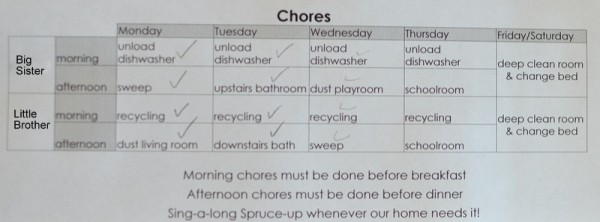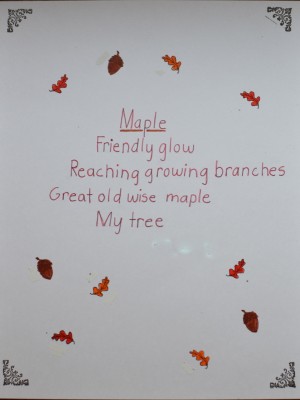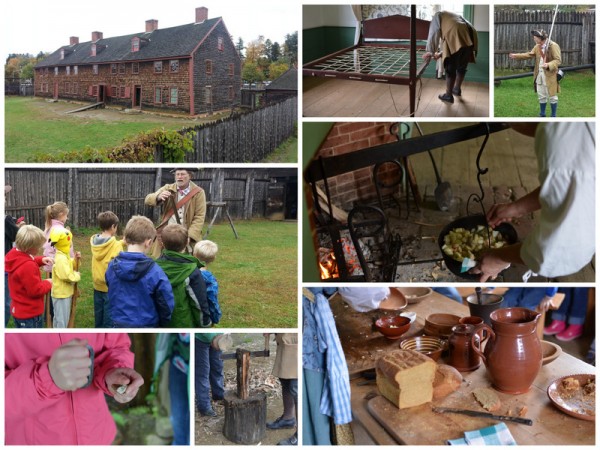Our Homeschool Journal: Jumping in Leaves and Playing in Snow!
It’s beginning to look a lot like Christmas…
We had our first real snowfall this week. The kids were very excited when they woke up and immediately bundled up and headed outside. They played for an hour and a half before breakfast! Our flexible schedule was key, because by afternoon the weather changed to sleet and then rain and melted all the snow. By the way, being able to sit inside with my coffee while they built forts and a snowman was quite nice. I only had to wipe a nose and fix mittens a couple times when they came to the door. Our tradition on the day of the first “real” snowfall (enough to accumulate on the ground) is to make snowflake sugar cookies.

In our homeschool this week…
We finished our election unit study and lapbooks, and of course took our field trip to vote! I’m happy I did this unit with my kids. My ten year old daughter was especially engaged in the topic, and we had so many important conversations throughout the election season and after the results were in. I’m glad for the opportunity to homeschool and be the one to educate my children on such weighty topics. Now my daughter wants to run for state representative when she’s 18!
We had a whole day at home (finally!) on Thursday and that gave us time for an art project. These two cute scarecrows, made using a tutorial from Art Projects for Kids (our favorite resource this week) now brighten up our art wall. When possible I like reading a related picture book before art projects, and the beautiful illustrations by David Diaz in The Little Scarecrow Boy by Margaret Wise Brown helped inspire our art. It was our first time using wax resist with watercolor and I enjoyed watching their amazement at the effect.

The rest of our time we filled with the three R’s, history, and nature study (focusing on trees).
Helpful homeschooling tips or advice to share…
Don’t be afraid to cut out an activity–even if it’s a good one–to balance your time out and time at home. Our first year of homeschooling I was afraid we wouldn’t be able to meet homeschoolers in our area and have activities with others to balance our time alone at home. Luckily my fears were unfounded, but this year I’ve found we had a little too much going on. Our geography club was meeting once a week, and in addition to going to the meetings there was quite a bit of preparation involved. We finally talked about it as a group and found we were all feeling over scheduled! We’ve changed to one meeting a month and hope that allows us to carry on a good activity without burning out.
Places we went and people we saw…
At my daughter’s Girl Scout meeting my husband taught them all about geocaching. He hid a temporary one for them to find and despite frigid temperatures they had a blast! My daughter also had a piano lesson and my son had Boy Scouts. It was a good week with a little more time at home than we’d had lately due to the change in geography club and a cancellation of a Friday meeting.
My favorite thing this week was…
Taking down the Halloween decorations and putting up the Thanskgiving ones–my favorite is our “Thankful Tree” which helps us focus on our blessings.

And we may or may not have played Christmas music on the day it snowed.
What’s working and not working for us…
I already mentioned the change in schedule that has helped ease the feeling of always being on the run. The other thing I added this week was a different chore system. We’d been using a pocket chart with little cards for chores. It wasn’t working as well this year for several reasons: it was outdated because my kids can help with more jobs now, it made extra work for me switching cards in pockets, and it wasn’t easy to have jobs that they do once a week versus daily (unless I kept track of what days to put them in their pockets). I was inspired by Mary’s chore chart at Homegrown Learners and created a simple spreadsheet:

Now the kids have the morning chores that they previously had, plus I’ve added an afternoon job that helps keep the house cleaner over the course of the week. The initial reaction to the news of an extra job was pretty poor, but after the first week they found it wasn’t too bad, and they liked the variety of a different job each day.
I also was inspired by Colleen at Raising Lifelong Learners and will be adding a “job jar” with chores listed on popsicle sticks. I will use this for punishments, and it will include rarely-done jobs like wiping down the baseboards, windowsills or kitchen cabinets. Colleen’s philosophy behind this system is worth reading.
We’re reading…
- We are listening to the audio version of By the Shores of Silver Lake. We enjoy it, but not as much as the other Little House titles so far.
- We are loving American History Stories by Mara L. Pratt from Heritage History on the iPad. You can read my review of Heritage History.
- Our homeschool book club title is The Hobbit. I have to say I’m not a fan of fantasy, my daughter appears to have the same opinion, and my son fell asleep while I was reading. I am usually a stickler for avoiding abridged versions–we just finished the unabridged Treasure Island and loved it. This time I gave up and we are listening to an audio dramatization.
- Our current poetry anthology is Nature in Verse by Mary Lovejoy, and we’ve had cozy mornings reading through the autumn section. It is a free selection from Google Books that was recommended by Barb at the Handbook of Nature Study blog.
- My daughter is reading Little House by Boston Bay by Melissa Wiley, Masterpiece by Elise Broach, and So You Want Women to Vote, Lizzie Stanton? by Jean Fritz.
- What am I reading? I have a couple lofty goals all of a sudden. While reading the section on trees in the Handbook of Nature Study by Anna Botsford Comstock I realized I’d love to go through the whole book cover-to-cover. It’s filled with great information, and though I’ve used it to look things up I feel like I’m getting just bits and pieces of a treasure trove. The other lofty goal: I downloaded Charlotte Mason’s original books from Ambleside Online. I would like to read them. I’ll let you know how that goes. Perhaps I will think better of this goal once I start and switch to one of the modern English versions.
A photo, video, link or quote to share…
Just thought I’d show you the additions our cat made to my writing on our family mission statement when she sat on my computer keyboard. She loves to sit there because of the warmth. Once she hit a key sequence that turned everything on my screen sideways. Another time my computer began reading aloud anything I moused over.
Continue reading










































 Hi, I'm Heidi and I homeschool my two sweet kids. I want them to know that learning is an exciting lifelong adventure! We love great books, unit studies, notebooking, lapbooking, and hands-on learning.
Hi, I'm Heidi and I homeschool my two sweet kids. I want them to know that learning is an exciting lifelong adventure! We love great books, unit studies, notebooking, lapbooking, and hands-on learning.



